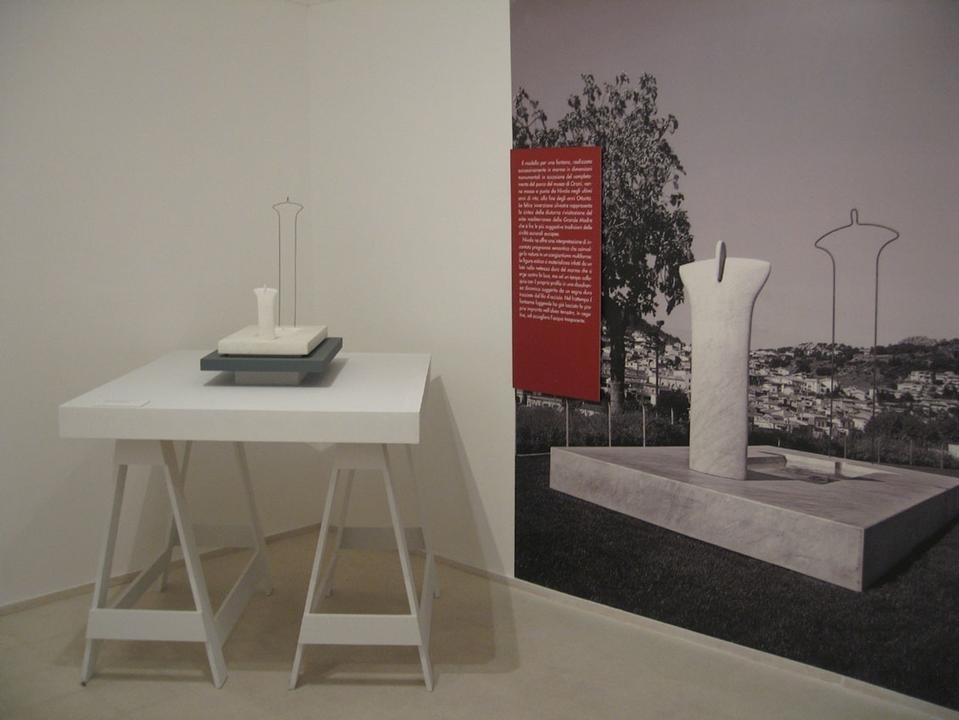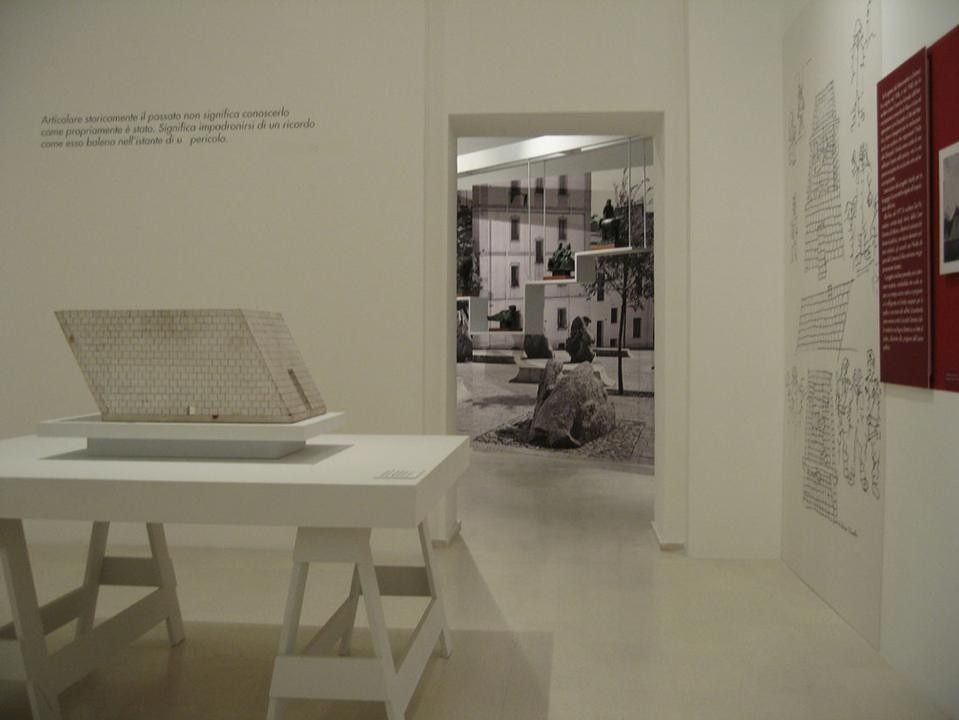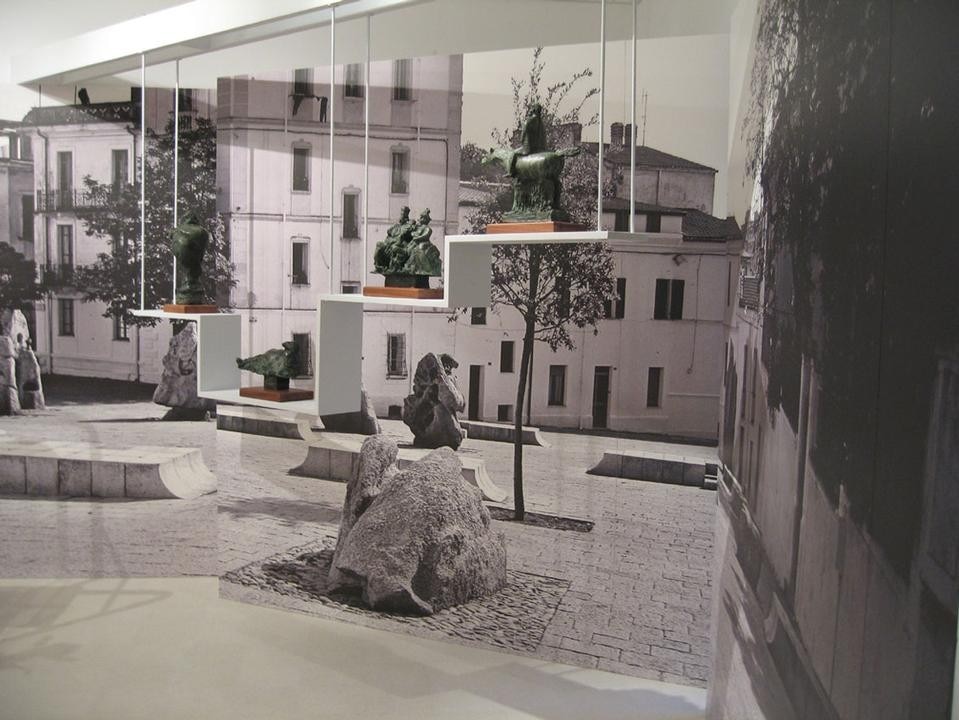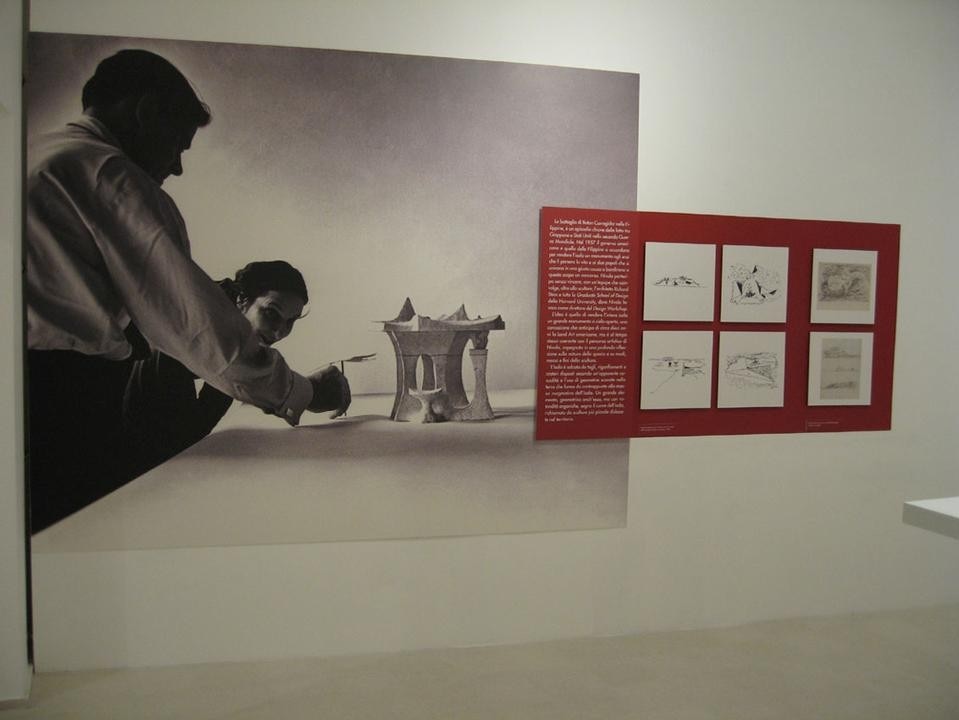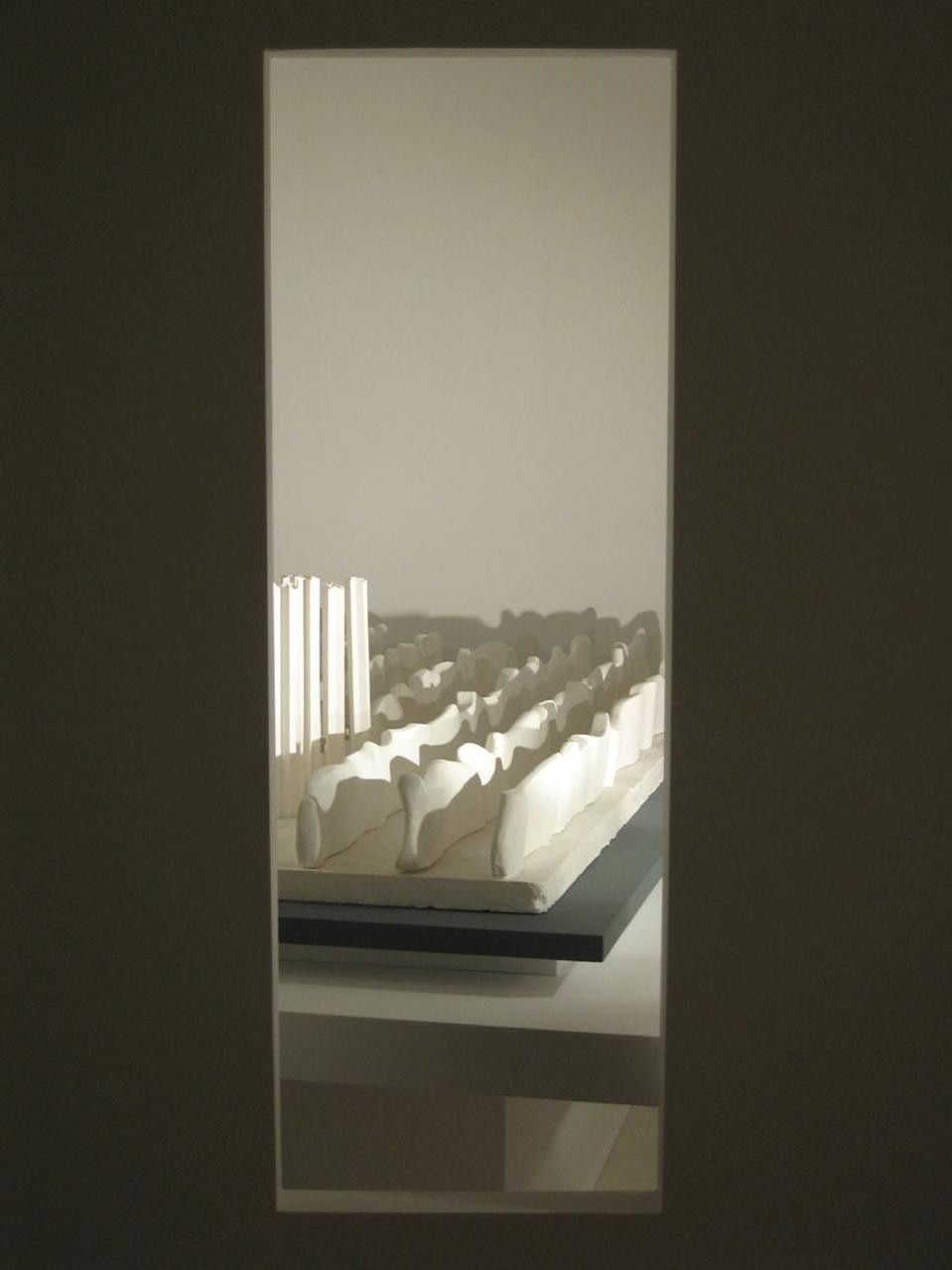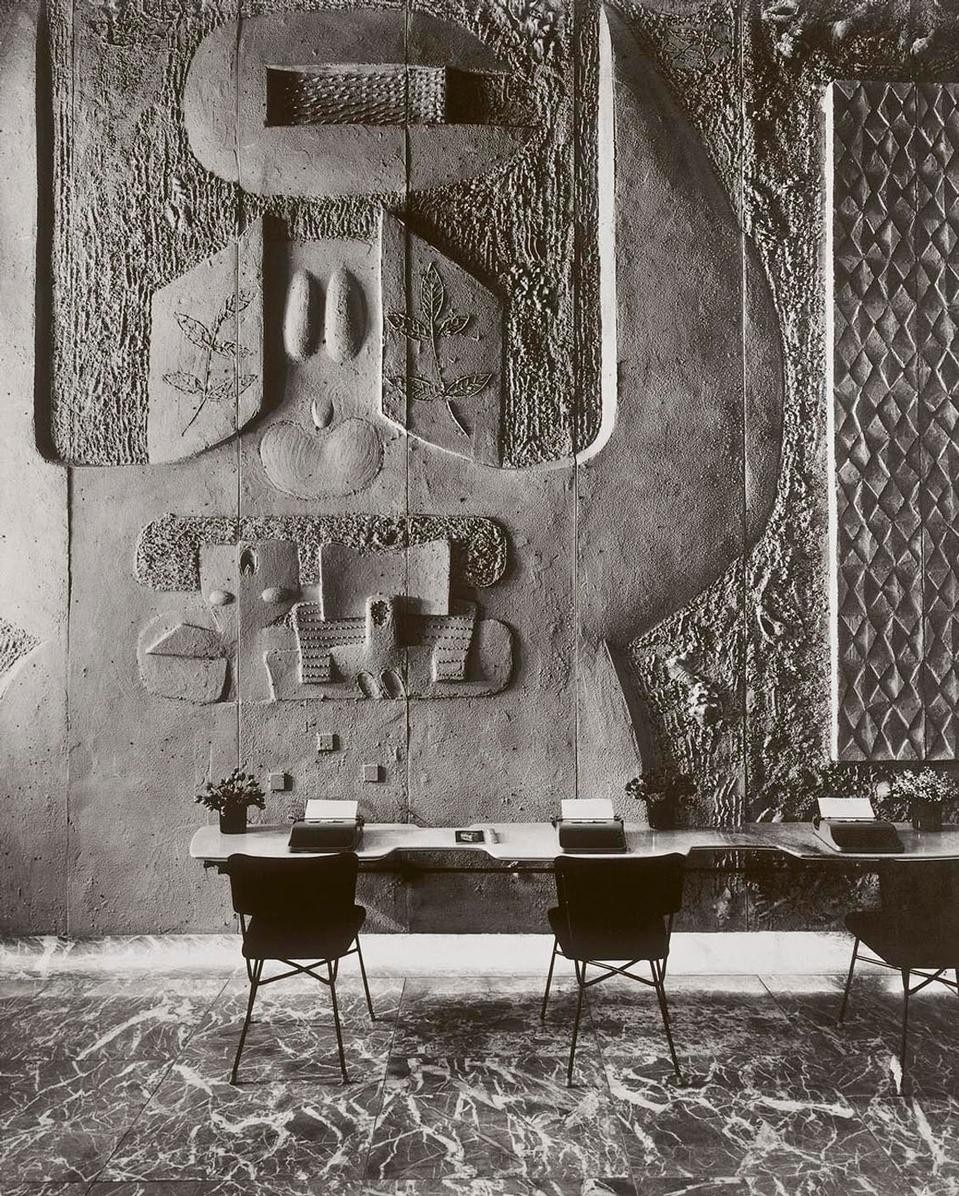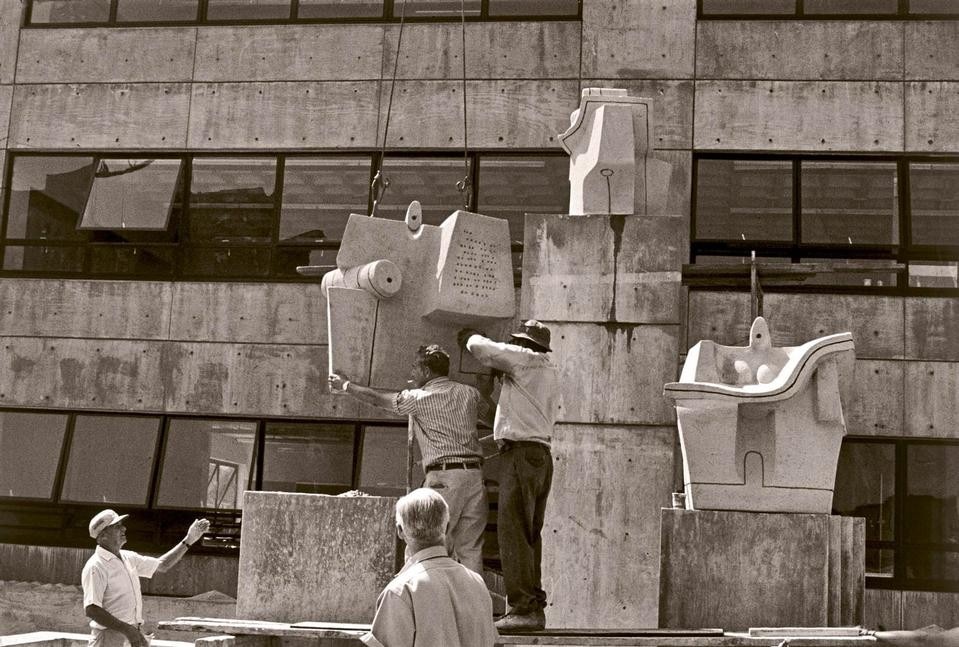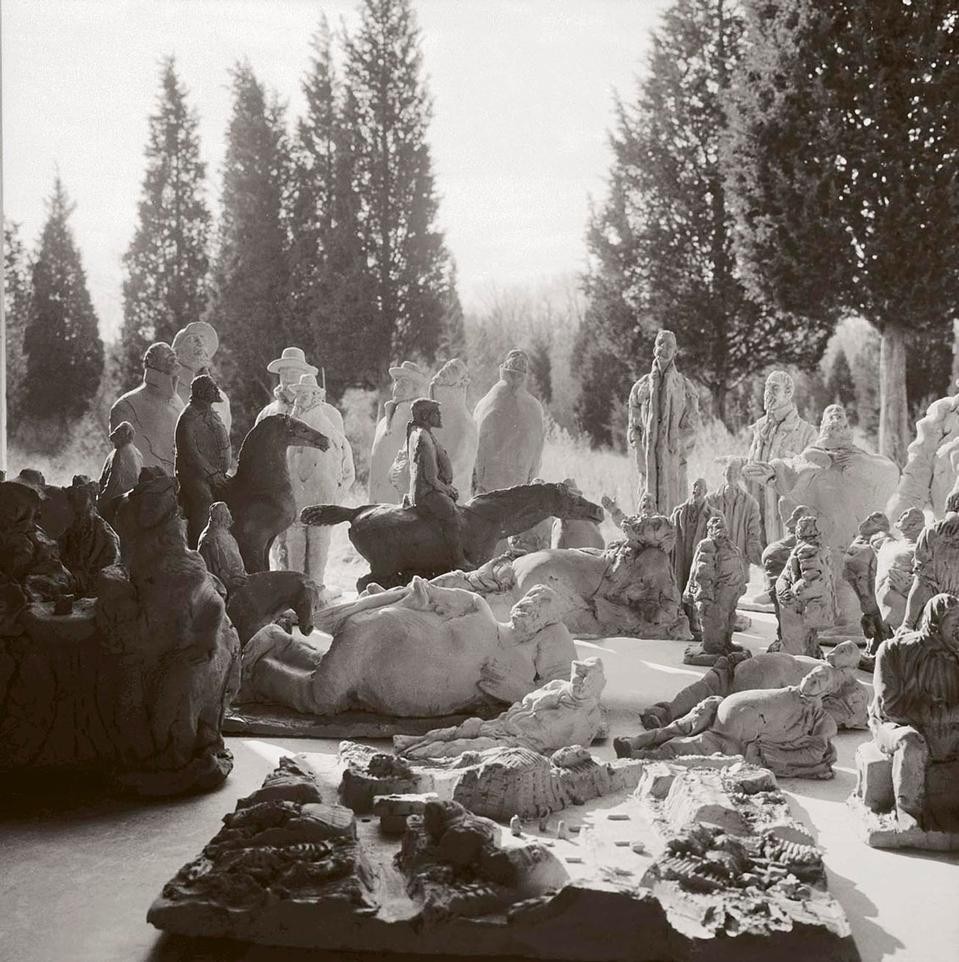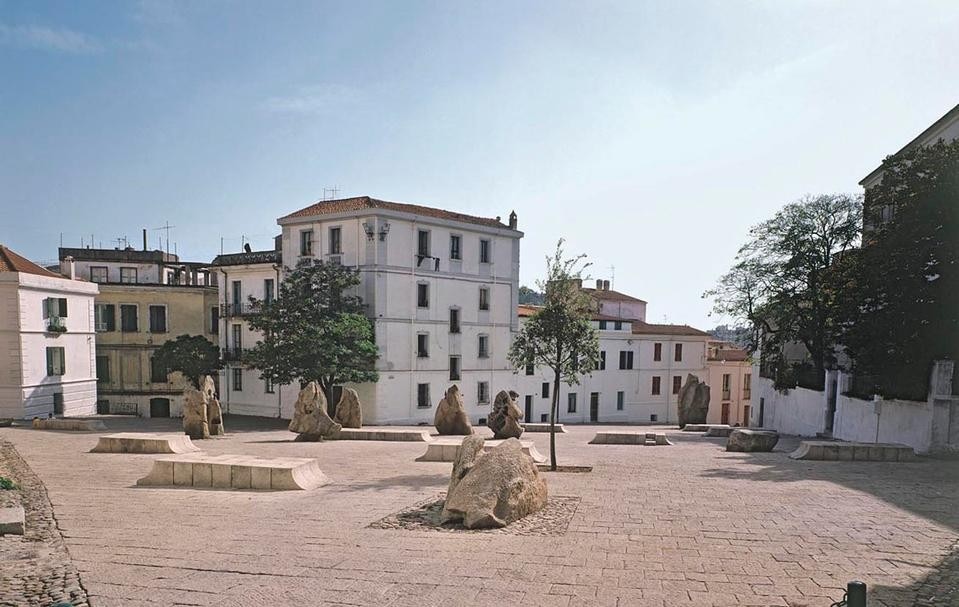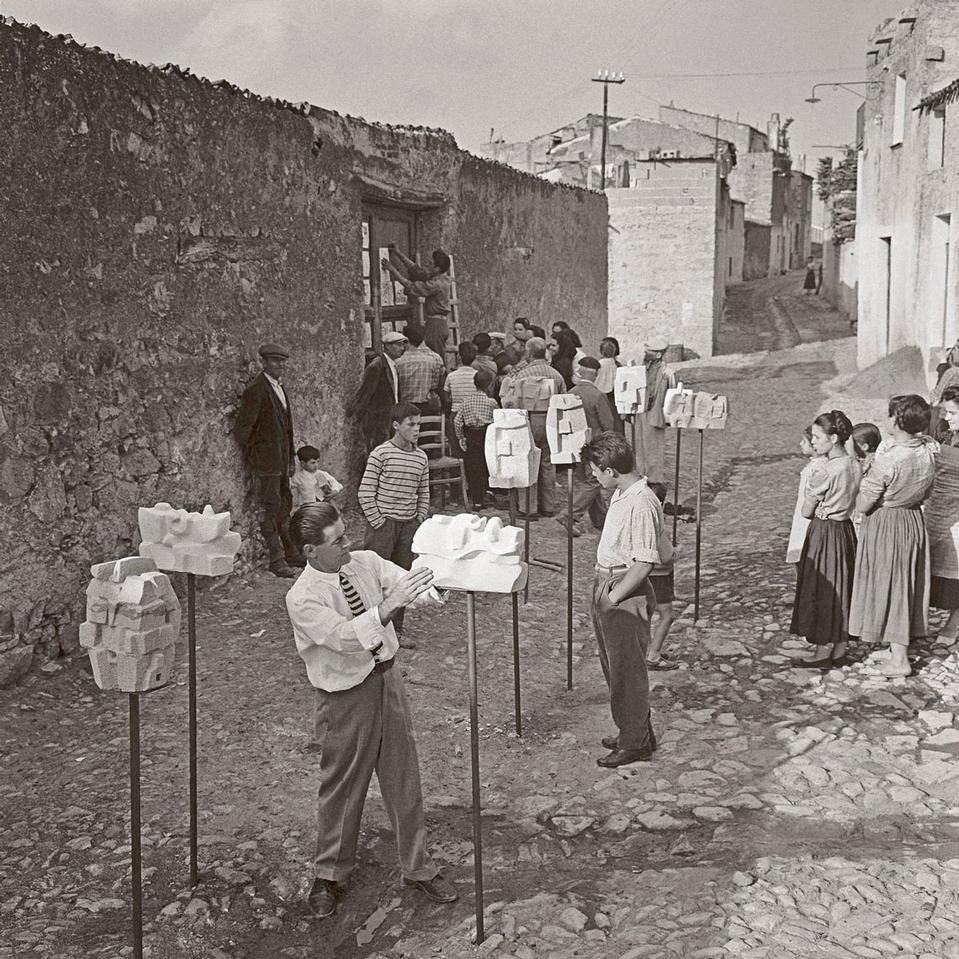The exhibition covering the artist's whole life, which we organised for the Milan Contemporary Art Pavilion in 1999, included some of the artist's spatial designs. However, the Nivola's desire for a total involvement with three-dimensional space - which he had from the beginning of the 1950s, the time when he began work as a sculptor - emerges even more strongly in the exhibition currently open in Nuoro.
Nivola closely followed the modern architecture scene in the rationalist Milan of the 1930s - and later in New York - and this undoubtedly helped sharpen his intellectual and artistic curiosity.
At the beginning of his career, Nivola was exposed to the formal richness of interiors designed by architects of Italian rationalism, such as Giuseppe Pagano and Edoardo Persico, who taught him at the ISIA in Monza. Above all, there were the extraordinary designs created in this period for the various Biennales and Triennales, which Nivola would certainly have seen and which would have given him much to learn from.
v If Milan was important for interiors, New York, which was his home from 1939 until his death in 1988, represented in contrast the artist's encounter with the external space of architecture and public areas - in short, the space of the civitas.
v In New York, Nivola collaborated with the leading architects of the time - during the artistic period that followed the New Deal - in the creation of public grounds for large social building complexes, such as schools and universities. He was involved in a large number of projects, and these are presented in the exhibition alongside models for his sculptures and murals, created using sand casting, and are documented as well with a wealth of photographs.
v These American projects were realised at the same time as others designed and partially created in Sardinia (Nivola continued to return to the island regularly, though he remained resident on Long Island). These Sardinian projects begin with the extraordinary open air exhibition held in Orani in 1958: this is documented by two original sculptures laid out as they were by him in the original exhibition, as well as with a selection of the outstanding reportage photography of the Sardinian photographer Carlo Bavagnoli.
v The exhibition devotes a lot of space to photographs, and includes images of the time taken, in many cases, by world famous photographers such as Cartier-Bresson and Hans Namuth, as well as by the artist himself. It also, however, puts on show full or partial completions of previously unrealised works, for example the brilliant Monumento a Gramsci (1966-67) and the Cappella del Corpo di Cristo (1982-83).
Andrea Nulli
Nivola. L'investigazione dello spazio
22 December 2009 - 21 March 2010
TRIBU, Nuoro, Sardinia. Piazza Santa Maria della Neve
Exhibition supported by the Region of Sardinia and the Nivola Foundation
Curated by Carlo Pirovano
Layout design: Progetto Media (Andrea Nulli, Silvana Sermisoni and Francesco Vicari)
Exhibition and catalogue: Ilisso Edizioni
